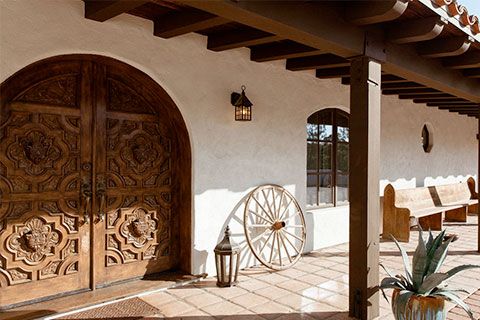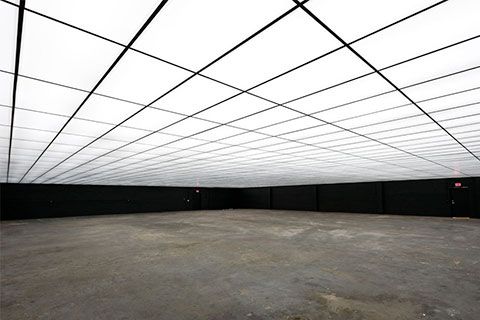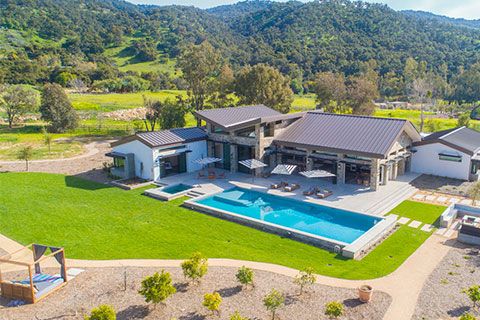Trade Shows | Simple. Or are they?
Guest Blog by Russell McIntosh | Director at Trade Show Training
Trade shows are on one view, very simple beasts. They are a place for buyer and seller to get together. Done. Let’s go home.
“Hang on” I hear you say, “I’ve organised a stand at a trade show and it wasn’t simple, it was a pain in the….”. The reality of trade shows is decidedly more involved than the basic marketplace model. Anyone that has had to organise a stand is well aware of the complexity and effort involved.
But need it be so hard? Where is this stress coming from?
Don’t get distracted
There are so many potential things to organise and hundreds of ways you can spend money on the logistics and marketing of a trade show stand. From the front end of choosing your stand position through to the back end of ensuring your leads are followed up properly and promptly, you can easily be overcome by the endless options available. Some of these are no brainers, like ensuring you provide the organisers what they need to promote you (logo, company bio, what you are having on the stand, etc). However, you will also be approached to advertise here, sponsor there, splash more cash over here, and pour money down that drain. How do you choose? It all comes back to what your objectives are and how the opportunities can help you achieve them.
Rent a location for your next film or photo shoot project on Giggster – A better way to book locations.






Objectives? Really?
A major flaw in most stands at a trade show is the absence of goals and objectives. Companies ‘do’ a trade show but with little regard for what they want out of it. Hence, I hear feedback that “we really didn’t do that well” and my reply is usually “well, what are you measuring this against?”. Cue the blank stare…….crickets. No longer is it about taking a stand at a show and then leaving it up to the gods. If you really want a return on your trade show investment, goal/objective setting should begin before you even work out which show to exhibit at, let alone book the stand.
I have oversimplified today’s goings on: I realise that most stands at a show do have a purpose. Make more sales, test a new product, build a database amongst others. All good reasons for being there. But not measurable. The goals need to follow the SMART approach (type ‘SMART goals’ into the Google monster for more info). Once these more SMART goals have been set, you can measure your performance against them at the other end.
I’ve booked the stand…..Let’s exhibit!!
Hold on, take your hands off the steering wheel and raise them in the air, making no sudden movements. You’re not done yet. You know those goals that you just set? They are now going to drive your decision-making on just about everything else you do for the show.
So, let’s get practical. Here are two goals from two different exhibitors that will drive different behaviour in how you approach what and who you have on the stand.
Goal 1: To get 300 leads from the show (building a database)
The show is open for 15 hours which means we need to get an average of 20 leads per hour. This tells us how many people we need on the stand. It also drives us to question the organisers about the busy times vs the quiet times, so we can put more people on the stand during peak to handle the load. This is a high number of leads and not something that will be easy to capture with pen and paper. A data capture app or using the organiser’s data capture system will be required to keep on top of this. The people we need on the stand need to be very sociable as there will be a lot of conversations. Who does this include/exclude from those available to me?
Goal 2: To arrange a meeting with 10 new prospects (getting a deeper connection)
This immediately places a focus on contacting prospects before the show to entice them to attend and to set-up some meeting times on the stand. It may be hard to get walk-up traffic to sit down and meet with you to build those deeper relationships. Pre-show marketing will need to be driven to access these prospects. What incentives can we put in place to drive the prospects to want to meet with us/ What type of giveaway may get them to commit? Do we host a function with a guest speaker? What people with the expertise required do we need on the stand to meet with these clients?
Comparing the two
So, two quite different goals warrant two very different approaches. The first goal was all about volume. It’s down to quick maths and questions of the organisers. The second goal was more about getting new but quality prospects. The need to have an incentive to entice them to book a meeting was a consideration. The goals also drove the need for attention to staffing the stand. A stand looking for a large volume of leads may be better placed with very social people that can think quickly on their feet. A stand that is wanting more qualified visitors and deeper conversations may be better placed with more technical people that have a deeper understanding of the products. A quick note here, most good stands (depending on size) will have a good mix of social and technical people. Social – gets them on the stand and has them talking, technical takes over when the deeper conversation is required.
So, when you are next thinking trade shows, before you do anything, sit down with a pen and paper and jot down some measurable goals. You will find every step of the organisational process will flow better with these concrete blocks in place.
Guest post by Russell McIntosh | Trade Show Training

Russell McIntosh has worked in the trade show industry for just on 20 years on events across varying sectors including food, automotive, oil & gas and financial services. He has seen some great and not so great examples of how to prepare for, interact on and follow up from a trade show. Trade Show Training was born as most exhibitors are getting it wrong and sometimes very badly.
Russell believes the standard of exhibiting has not improved in the previous 20 years and, if anything, has gone backwards. Russell wants to change this downwards trajectory and make companies realise the value of trade shows when they are planned and done well. Away from shows, Russell has three young kids and loves playing basketball although his body doesn’t agree.

